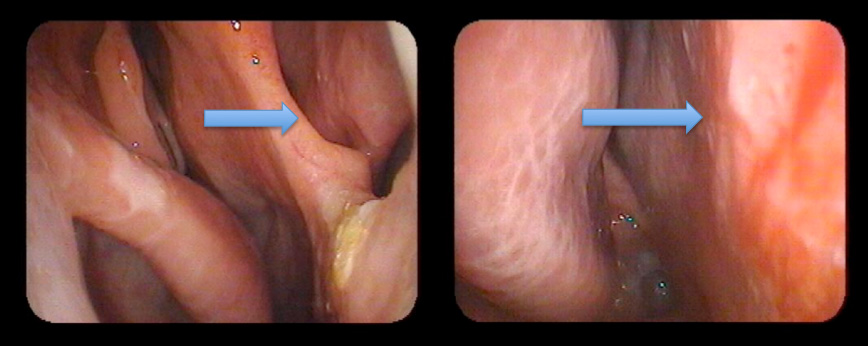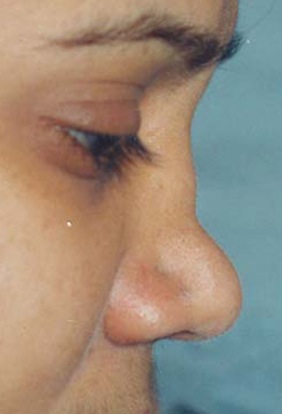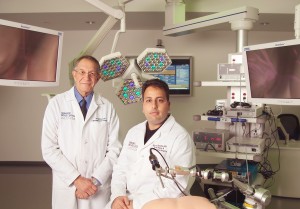- Hereditary Hemorrhagic Telangiectasia - May 25, 2016
- Hereditary Hemorrhagic Telangiectasia: Septal Perforation and Nose Bleeds - May 23, 2016
- Hereditary Hemorrhagic Telangiectasia: Epistaxis and Septal Perforation - May 18, 2016
- Wegener’s Granulomatosis: Autoimmune Disease and Multi-Focal Septal Perforation - May 9, 2016
- Kyle Korver: Facial Injury and Nasal Fracture - March 24, 2015
- Russell Westbrook: Facial Injury and Surgery - March 5, 2015
- Mega-perforation: Pushing the Limits of Septal Perforation Repair - November 26, 2014
- Septoplasty Complication and Septal Perforation - November 24, 2014
- Nose Picking (Rhinotillexis) and Septal Perforations: Why I should stop picking my nose…? - November 24, 2014
- Nasal Fractures, Septal Hematoma, and Septal Perforation: Simultaneous Rhinoplasty and Septal Perforation Repair - October 1, 2014
How do I know if I’m a candidate for repair of my septal perforation?
Question: I just had my 3 month post-operative appointment with my doctor after having a septoplasty and rhinoplasty. He told me that I had a hole in my septum (a septal perforation) as a result of my surgery. I was shocked that he told me not to worry about it. He said it was only 1cm in size, and that was “small”. He said that septal perforations are difficult, if not impossible, to fix and that I should leave it alone. He then said I should follow-up with him if I started to have frequent nose bleeds, any foul smelling odors in my nose, or the shape of my nose started changing. These sound horrible but he again said not to worry…. What?! I said OK but only after I made up my mind to find a doctor who could help me. Can you help me?

Right: Septal perforation closure after minimally invasive repair. Note that the perforation is completely closed.
Discussion: Septal perforations are holes in the septum, which is the bony and cartilaginous structure that divides the nose into two halves. Perforations are most commonly caused by an injury (trauma, surgery, etc) to the nasal septum that cuts off the blood supply to the cartilage and lining. Starved of oxygen and nutrients, the injured area dies and leaves a hole in its place.
Symptoms of a perforation include:
- chronic whistling from the nose while breathing
- nosebleeds
- foul-smelling crust
- recurrent infections
- nasal congestion
- sinusitis
- nasal collapse/deformity

Nasal collapse due to a septal perforation from a poorly-done rhinoplasty.
The severity of symptoms depends on the size of the perforation; larger perforations have more severe symptoms. Although small perforations can be asymptomatic initially, they tend to enlarge over time. If left untreated, they cause a progressive increase in the number and severity of symptoms.
All perforations should be treated to prevent long-term complications.
Smaller perforations (<1cm) and be managed initially with humidification, antibiotic ointments and irrigation. Perforations 1-2cm in size can initially be managed with a septal button implant. The septal button covers the perforation and allows the lining around the perforation to heal. This implant can stay in permanently if the patient is comfortable. If not, it can be used temporarily, prior to a permanent surgical repair. We currently have found patients do best in the long run with permanent repair.
Key Points:
Definition: Septal perforation is a complete hole in the nasal septum, caused by an injury (i.e., trauma or surgery).
Symptoms: Whistling, nosebleeds, foul smelling crust, recurrent infections, nasal congestion, sinusitis and nasal collapse/deformity
Treatment: All perforations regardless of their size should be treated aggressively to prevent complications. Medical, minimally-invasive, and surgical options are selected based on the size of the perforation at initial diagnosis
Recommendations: Currently we permanently repair all septal perforations and have had a 100% success rate in eliminating symptoms
Read patient stories about Dr. Jason Hamilton, of the Osborne Head & Neck Institute.
To learn more about septal perforation repair by Dr. Jason Hamilton, and other procedures offered at the internationally renowned Osborne Head and Neck Institute visit our website at: http://www.perforatedseptum.com/




